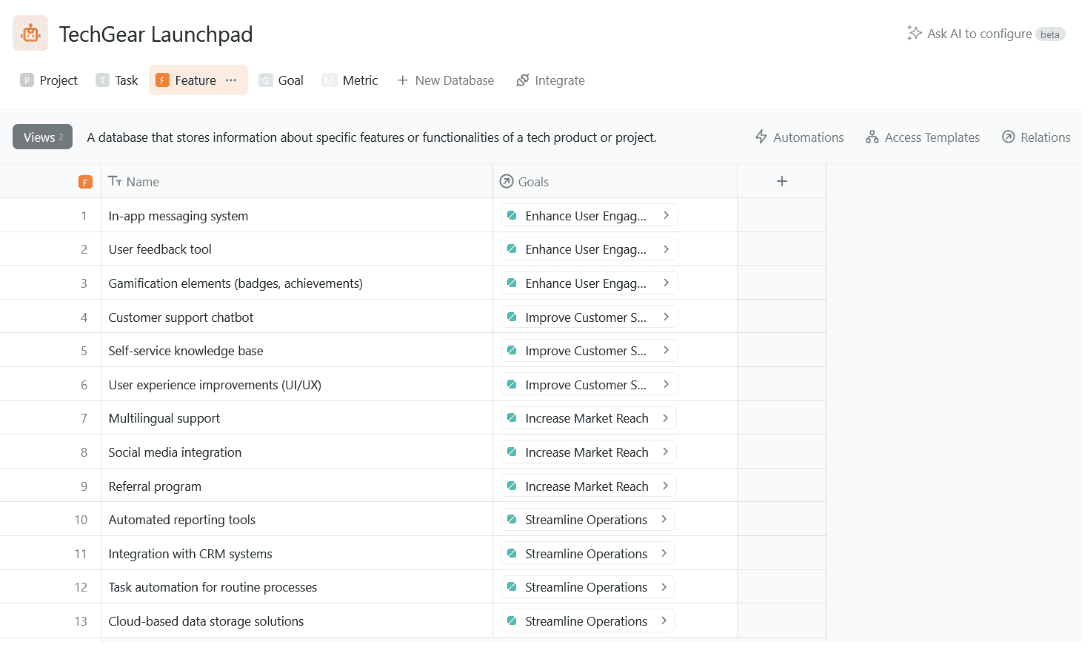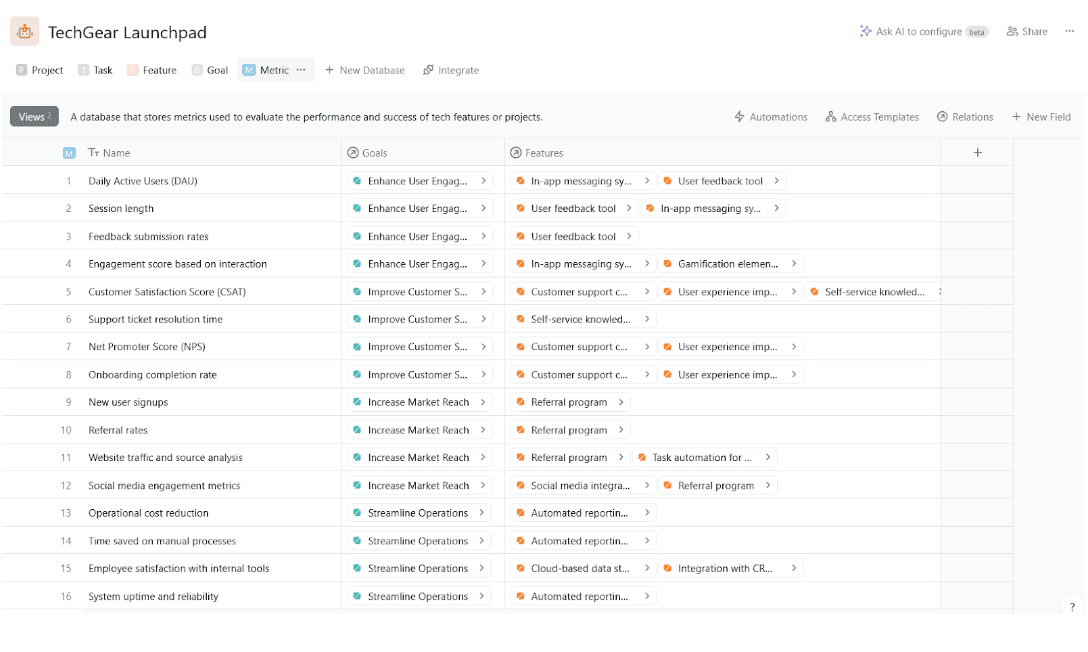Goal-Orientated Roadmapping – the Adaptable PM Navigator
When planning a project, many tools out there focus on what needs to be done and who’s doing it. But we’re shining the spotlight on a different technique that doesn’t just nail down targets but also keeps everyone, from stakeholders to customers, in the picture.
This method comes from Roman Pichler, an expert in product management. His GO (Goal-Oriented) roadmap tool changes our perspective from just ticking off boxes to hitting the milestones that are important for everyone involved.
Here’s what we’re going to unpack:
- The core ideas behind the GO product roadmap.
- An introduction to Roman Pichler himself.
- A straightforward walkthrough for building your own GO roadmap with Fibery.
- Insights into why choosing a goal-oriented roadmap could be a game-changer for your projects.
We’ll go through how using this approach and learn how the essence of the GO product roadmap can revolutionize your project planning.
What is a GO Product Roadmap?
A GO product roadmap, short for “goal-oriented” product roadmap, is essentially a smart strategy that emphasizes what you want to achieve rather than just listing all the things you want to build.
It prioritizes the end goals and aligns your team’s work with these targets. This approach helps everyone understand why they’re doing what they’re doing in a way that’s crystal clear for not only product teams but the stakeholders and customers, too.
Think of it as offering a clear path so everyone involved knows exactly where they’re heading and what they need to do to get there.
Who is Roman Pichler?
Roman Pichler is the Yoda of product management and is known for making complex ideas accessible. With some pretty impressive experience under his belt, he’s recognized as a leader expert in the field of PM.
He’s notably responsible for introducing the goal-orientated product roadmap and developing what’s known as the ”Strategy Stack.” His acclaimed book, ”How to Lead in Product Management,” provides practical insights on navigating the challenges of product development with strategic finesse.
How to Create a Goal-Orientated Product Roadmap?
Crafting a GO product roadmap means strategically aligning every part of your project with big-picture objectives. It ensures that each feature, release, and update your rollout has meaning and makes an impact.
Using Fibery to build your GO roadmap brings clear focus, adaptability, and teamwork into the mix. Here’s how you can start this critical process:
1. Identify Your Goals, Advantages, and Target Outcomes

The first step in developing a GO roadmap involves being crystal clear on what you want your product to achieve: The goals that will offer advantages and the outcomes you’re striving for.
Kick things off by pinpointing key targets—this could be anything from boosting user engagement to breaking ground in new markets or ramping up customer happiness.
With Fibery at hand, map these priorities as ‘Goals’ entities so they stand out clearly—we’re talking unique names coupled with detailed descriptions, so there’s no confusion down the line.
This sets the stage for everything else: Where your roadmap takes its cue regarding direction and purpose right from day one.
2. Pinpoint Essential Features to Achieve Your Targets

Once your targets are set, it’s time to zero in on the main features that will help you hit those marks.
This is all about thoughtfully considering which functions or enhancements are essential for reaching your desired results.
With Fibery’s feature planning tools, you can lay out these features alongside your objectives. It’s a clear way to see how each feature connects back to your goals and ensures every piece of the puzzle is there for a reason.
3. Set Clear Metrics for Success

To truly understand if you’re hitting the mark with your plans, it’s vital to pinpoint clear indicators of success or metrics.
These markers could cover anything from how often users engage with your product to the uptick in earnings—whatever matters most for what you’re trying to achieve.
Fibery is here as a tool that connects these important metrics directly with your goals, furnishing a concrete set of benchmarks that can steer choices and fine-tune strategies during development.
4. Map Out Timelines for Feature Rollouts

Getting timing right isn’t just about being punctual; it’s strategic finesse in action.
Choosing the opportune moments to unveil new features requires weighing up what’s doable on the tech front against market trends and potential competitive edges.
Here, carve out phases within your roadmap into attainable releases and assign sensible deadlines based on both tech team rhythms and external market pulses.

Leverage tools like Fibery’s visual timelines and calendars, they’ll help crystallize these periods so everyone involved has clarity on key milestones ahead.
Why is a GO Product Roadmap Great?
As we’ve seen, the goal-orientated product roadmap is a standout tool when it comes to visibility for stakeholders and teams. Here’s why you should consider giving it a go for your next big project:
- Concentrated Effort: It guides teams to ignore distractions by aligning their work with the main objectives. This keeps priorities sharp and productive.
- Built for Change: The tech world moves quickly, but the roadmap’s flexibility allows teams to adapt swiftly to new information or market shifts without losing their way.
- Everyone on Board: Turning complex goals into clear steps brings team members and investors together around a common goal which smooths out collaboration.
- The Customer at the Heart: Development that focuses on reaching specific outcomes ensures each feature works towards increasing customer satisfaction, making sure your product resonates in the marketplace.
- Smart Decisions: With this roadmap as a guide, choosing where to allocate resources and what features to develop becomes easier—it’s all about what will most effectively meet strategic targets.
At its core, the GO product roadmap reimagines what a traditional roadmap looks like. Instead of just being a static checklist with features and timelines, it becomes something much more powerful: A strategic guide for the entire product development journey.
This approach makes sure that everything we do moves us closer to real goals that matter.
The PM’s Hot Take
In an industry fixated on adding new bells and whistles and meeting tight schedules, the GO product roadmap serves as our touchstone. It brings us back to what truly matters and not just the quantity of work we churn out, but the real difference it makes. If your roadmap is merely a checklist dressed in fancy jargon, you’re not fully capturing its potential value.
Conclusion
The GO product roadmap transforms how we think about progress. It’s not just ticking off boxes but moving with intention towards the true potential of your products.
For product managers accustomed to traditional tools that emphasize feature completion over strategic advancement, adopting a goal-oriented roadmap like Roman Pichler’s can be quite refreshing.
It aligns teams under a shared vision, enhancing focus and collaboration from stakeholders to developers who will welcome this renewed clarity in direction.
Curious about experiencing firsthand what an intuitive platform designed specifically for product managers has to offer? We invite you to explore Fibery through a free trial and demonstration available on our website—it might just revolutionize every aspect of managing your product’s lifecycle.
And if you’re looking for more wisdom on effective roadmapping or prioritization strategies, dive into the wealth of knowledge waiting on the Fibery blog.
Psst... Wanna try Fibery? 👀
Infinitely flexible product discovery & development platform.